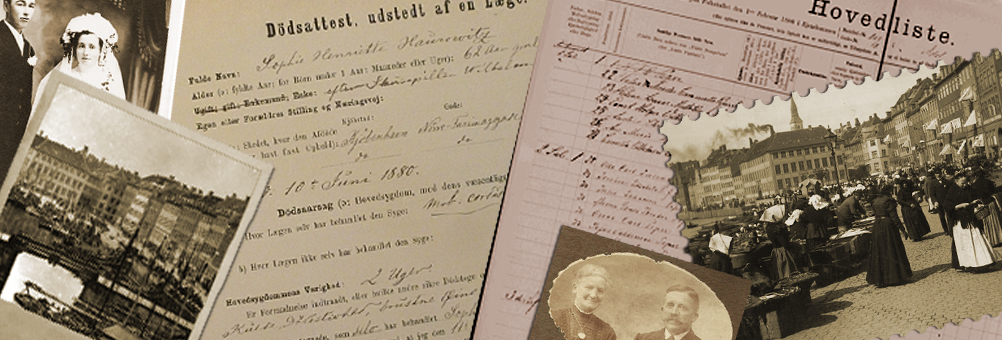Link-Lives: towards a Danish national historical life-course and multi-generational database 1787 - 1968
Together with the National Archives, Copenhagen City Archive and the Brunak Group (NNF-CPR, Center for Protein Research, UCPH) the BioHistory Group is working to establish a large-scale historical longitudinal individual database of life courses and multigenerational relationships in Denmark. We call this project Link-Lives.

Link-Lives aims to grow a national data structure, which links information from different archival sources to reconstruct life-courses and family-relations for (nearly) all individuals who have lived in Denmark 1787-1968. Link-Lives will transform archival cultural heritage from an opaque mass of singular information to accessible knowledge structured as historical big data about individuals. Link-Lives will be connected to the modern Danish CPR-system in a secure environment.
The backbone of Link-Lives will be life-course-frames linked from data about the same person in different censuses. We harvest censuses that are digitalized by crowd-sourcers. The data structure will allow the life-course-frames to be enriched by information from many other sources, such as parish registers and death certificates. It will be possible for citizen scientists to contribute to this enrichment and also to integrate individual level data from research projects. Link-Lives will be a new system supporting research, which will allow easy, inexpensive access for citizens and scientists to high quality life-course and multigenerational data.
Link Lives creates new knowledge about historical individuals via data integration. It combines known automatic probabilistic linkage methods, in which links have attributes, with development of new deep learning techniques.
Pilot projects
We started the first pilot project in 2014, when Barbara Revuelta came to Denmark funded by a DFF-Mobilex grant. She developed and tested methods for automatic probabilistic linkage of all residents of Copenhagen as they appeared in the 1880 census to their appearance in the 1885 census. The city had then roughly a quarter million inhabitants.
Right now we are working to link the people not retrieved in the 1885 census to their eventual appearance in death certificates (transcribed by student assistants for this project) and burial registers. This will improve our linkage rate and allow us to study causes of death.
Millions of records transcribed by volunteers in crowd sourcing projects conducted by the Danish archives
Our pilot projects, as well as Link-Lives, are possible due to the wealth of already digitized and transcribed sources. At the Danish Demographic Database 9 of the 21 Danish censuses conducted between 1787 and 1940 are fully transcribed, the rest is in progress.
All burial records from Copenhagen 1861-1940 are under transcription by Copenhagen City Archive..
Towards more, longer and richer life-courses
When funding allows it, the next step will be to link life-course-frames from all already transcribed census data for the whole Denmark (now 19 mill records), display them to the public, and give other researchers access to extracts at the Danish National Archive.
Later information from all kinds of other sources will be linked to the life-course frames. The collections of the Danish Archives have plenty to choose from such as: Parish registers with every birth, marriage and death since 1763. Conscript heights since 1701. Full birth records of stillbirths since 1802. Cause of death in Copenhagen since 1836. All patient records at the Royal Hospital since 1757 (4 mill). Local archives own rich collections of which no central knowledge of coverage exist such as biographies in poor relief protocols since 1803 and school marks since 1814. In addition to the written material, named skeletons excavated from churchyards going back to the eighteenth century make it possible to connect DNA and isotope analysis to life-courses and family relations.
Contact
PI: Anne Løkke
